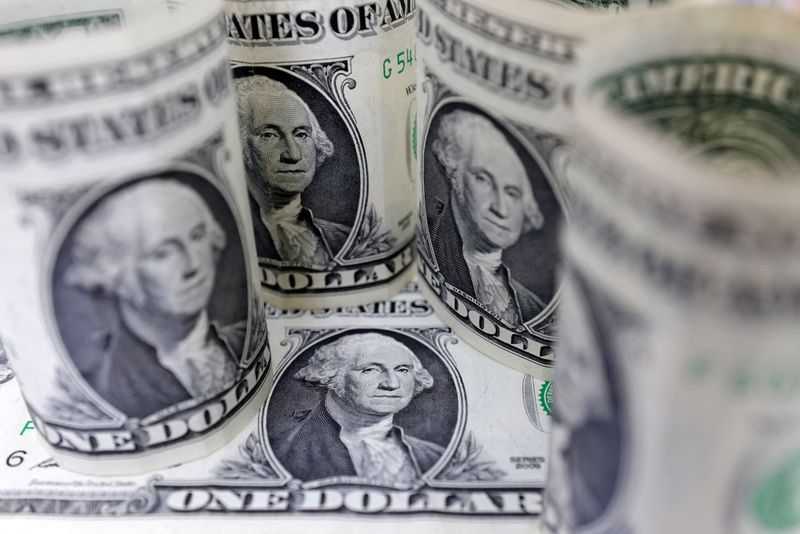By Hannah Lang and Ankur Banerjee
NEW YORK/SINGAPORE (Reuters) -The dollar rose on Monday after data showed the U.S. manufacturing sector grew in March for the first time since September 2022, while the yen loitered below 152 per dollar keeping traders on edge over the threat of intervention.
The Institute for Supply Management (ISM) said U.S. manufacturing grew for the first time in 1-1/2 years in March as production rebounded and new orders increased, although employment at factories remained subdued and prices for inputs pushed higher.
The rebound ended 16 straight months of contraction in manufacturing, which accounts for 10.4% of the economy. That was the longest period of shrinking since August 2000 to January 2002.
The dollar index, which measures the U.S. currency against six rivals, was 0.469% higher at 104.97.
Markets on Monday lowered their bets on the Federal Reserve cutting rates in June, after earlier boosting the odds when a readout on Friday showed easing U.S. prices, the CME FedWatch tool showed.
The personal consumption expenditures (PCE) price index rose 0.3% in February, the Commerce Department’s Bureau of Economic Analysis said on Friday, compared with the 0.4% rise that economists polled by Reuters had forecast.
“In conjunction with Friday’s PCE data, I don’t think this is still going to materially actually change the calculation for the Federal Reserve, but markets are starting to once again move a little bit more in line with the Fed’s own expectations as to how often and when they’re going to cut this year,” said Helen Given, FX trader at Monex USA.
Fed Chair Jerome Powell on Friday said the latest U.S. inflation data was “along the lines of what we would like to see,” in comments that tallied with his remarks after the Fed’s policy meeting last month.
“The Fed’s willingness to tolerate inflation well above 2% while still considering rate cuts is supporting risk assets,” said Mansoor Mohi-uddin, chief economist at the Bank of Singapore.
The currency market’s spotlight has been on the yen as its move toward levels last seen in 1990 revives the risk Japanese authorities will intervene.
The yen touched a 34-year low against the dollar of 151.975 on Wednesday and was last at 151.745 per dollar on Monday.
Japan intervened in the currency market in 2022, first in September and again in October, as the yen slid toward a 32-year low of 152 to the dollar.
Japan’s plans for the yen remain difficult to predict. Its fiscal year has ended, meaning the Bank of Japan does not need to worry about sudden yen movement impacting balance sheets.
But news of last week’s emergency meeting of the three monetary authorities – the Ministry of Finance (MOF), BOJ and Financial Services Agency – and comments from officials have so far kept the yen above 34-year lows.
Finance Minister Shunichi Suzuki said on Monday he would not rule out options against excessive currency movement and would respond appropriately, reiterating his warning on rapid yen moves.
China’s yuan weakened on Monday, pressured by the dollar, even as the latest Chinese data implied the economy’s recovery has gained traction and the central bank’s sustained efforts have stabilised the currency. [CNY/]
The offshore yuan last traded at 7.2592 per dollar.
In other currencies, the euro was 0.44% lower at $1.0742, while sterling was last at $1.25660, down 0.45% on the day.
In cryptocurrencies, bitcoin last fell 0.79% to $69,097. Ether was 0.59% higher at $3,518.90.
